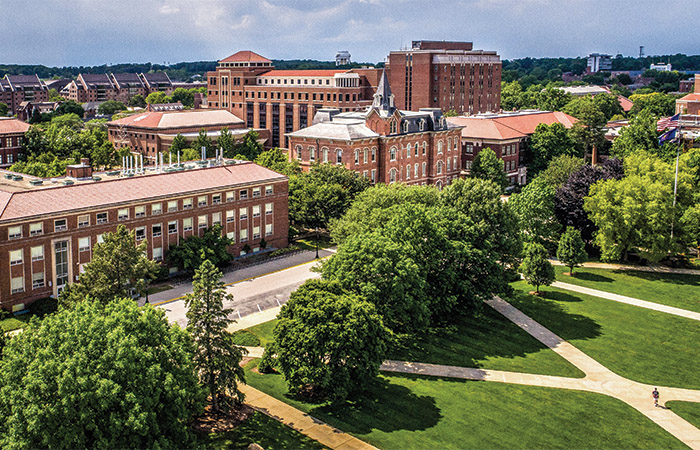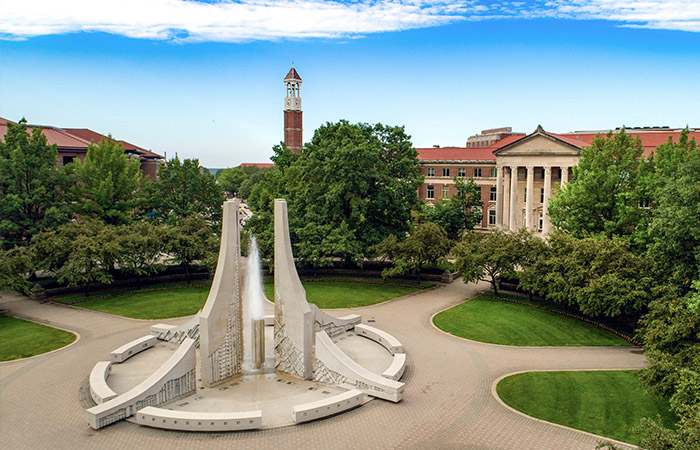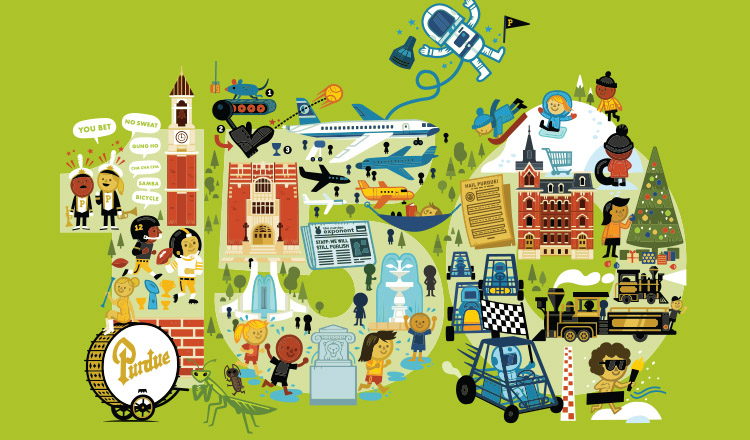Parts of campus that are unmistakably Purdue
1. Tunnels
Don’t want to get bowled over by Arctic winds on your way to class? No problem. Purdue has several pedestrian subwalks connecting buildings underground across campus. A campus-wide tunnel system dates back half a century. Even though much of campus is connected, many of the tunnels house utility systems and are accessible only to physical facilities staff.
2. Hull Field
The “All-American” Marching Band’s practice location, Hull Field, is located a few blocks west of Elliott Hall of Music on Third Street. When the band’s practice schedule is in full swing, they march down the street and back again, temporarily blocking traffic and playing music the entire way.

3. Memorial Mall
Spread between Stewart Center and University Hall is one of campus’ favorite green spaces: Memorial Mall. Home to a farmers market during the summer and Hello Walk, this is one of the busiest — and friendliest — places on campus. The west side of the mall is home to Memorial Fountain and John Purdue’s grave. While much of the legend around Purdue’s requirements for the University are more myth than fact, it is true that when he donated money to found the school, he stipulated that he be buried on campus.

4. The Purdue Mall
In the postwar years, with enrollment skyrocketing, the University had its work cut out trying to accommodate the influx of new students. Little attention could be devoted to campus aesthetics. That all changed in the 1980s. One of the biggest transformations was the creation of the Purdue Mall, popularly known as the Engineering Mall, anchored by the Purdue Mall Water Sculpture. While it remains an often-congested place on campus, today it’s because of foot traffic instead of cars.
5. Intramural Field
Intramural sports are one of the most popular ways to get involved on campus. The intramural sports program, managed through the division of recreation and wellness, provides the opportunity for structured individual, dual, and/or team leagues, tournaments, and events in more than 40 sports. Each year, approximately 18,000 students participate, including 300 basketball teams, 250 flag football teams, 230 sand volleyball teams, 180 outdoor and indoor soccer teams, and 180 softball teams.
6. The Susan Bulkeley Butler Women’s Archives
Established in 1906, the Women’s Archives celebrates the professional accomplishments of Purdue women — and, more broadly, women across the state of Indiana.
7. Purdue Research Park
Under development since the late 1990s, the four Purdue Research Parks across Indiana are now home to nearly 200 companies encompassing numerous industries and fields of study, including biology, materials science, and information science. The flagship location in West Lafayette is the largest university-affiliated business incubation complex in the United States.
8. Virginia Kelly Karnes Archives and Special Collections Research Center
The Virginia Kelly Karnes Archives and Special Collections Research Center is named for the first woman to chair the President’s Council. Here, researchers can find anything they want to know about Purdue’s history. Opened in 2009, the facility includes special displays, permanent collections, a reading room, and processing facilities for new materials.
9. Red Brick
Purdue’s campus is famous for its red brick. According to urban legend — and patently untrue — John Purdue stipulated that the school should be built with this color and material. The reality is much simpler: the school used red bricks because it’s what was available in the region. Regardless, the red brick has become a symbol for the University. From President James H. Smart’s rally cry of “one brick higher” after Heavilon Hall burned down to the 1968 red brick protest, the construction material is forever bound with Purdue’s identity.

